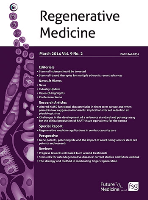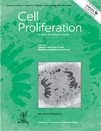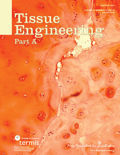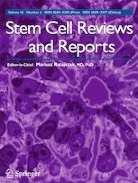
International Journal of Stem Cells
Scope & Guideline
Transforming Understanding through Rigorous Research
Introduction
Aims and Scopes
- Stem Cell Biology and Therapeutics:
The journal emphasizes research on the biology of various stem cell types, including pluripotent and multipotent stem cells, and their potential therapeutic applications in regenerative medicine, such as tissue repair and organ regeneration. - Organoid Technology:
A significant area of focus is on the development and application of organoids, which are three-dimensional structures derived from stem cells that mimic organ functions. This includes guidelines for organoid manufacturing and studies on organoid systems for disease modeling. - Stem Cell Imaging and Characterization:
Research involving advanced imaging techniques to characterize stem cells and their differentiations, as well as the application of single-cell technologies to understand cellular heterogeneity within stem cell populations. - Stem Cell Engineering and Manipulation:
The journal covers methodologies for engineering stem cells, including genetic manipulation techniques like CRISPR/Cas9, to enhance their therapeutic efficacy and understand the underlying mechanisms of stem cell differentiation. - Stem Cell Interaction with Microenvironment:
Studies on how stem cells interact with their microenvironment, including immune interactions, extracellular vesicles, and the influence of biochemical signals on stem cell behavior and fate. - Clinical Applications and Safety Studies:
The journal publishes research on the clinical applications of stem cell therapies, including safety assessments, efficacy studies, and the challenges associated with translating stem cell research into clinical practice.
Trending and Emerging
- Advanced Organoid Models:
There is a noticeable increase in research focusing on organoid technology, with studies exploring the development of organoids from various stem cell types for applications in drug testing, disease modeling, and regenerative medicine. - Stem Cell Genomics and Single-Cell Omics:
The use of genomics and single-cell omics technologies is gaining momentum, allowing for a deeper understanding of stem cell heterogeneity, lineage tracing, and the regulatory networks governing stem cell behavior. - Stem Cell Therapy for Neurological Disorders:
An emerging focus is on the use of stem cells for treating neurological disorders, including applications of iPSCs in modeling diseases like Parkinson's and Huntington's, as well as exploring potential therapeutic avenues. - Immunomodulatory Properties of Stem Cells:
Research on the immunomodulatory effects of stem cells, particularly mesenchymal stem cells, is trending, highlighting their potential in treating autoimmune diseases and enhancing tissue repair. - Bioengineering and Stem Cell Applications:
There is a growing interest in bioengineering approaches to enhance stem cell therapies, including the development of biomaterials and scaffolds that support stem cell growth and differentiation. - CRISPR/Cas9 and Gene Editing Technologies:
The application of gene editing technologies, particularly CRISPR/Cas9, is increasingly prevalent in stem cell research, enabling precise modifications that enhance therapeutic potential or study disease mechanisms.
Declining or Waning
- Traditional Differentiation Protocols:
Research focused on basic differentiation protocols for stem cells has decreased as more sophisticated techniques, such as organoid formation and bioengineering approaches, gain traction. - Basic Stem Cell Characterization Studies:
There has been a waning interest in purely descriptive studies that characterize stem cells without applying them to therapeutic contexts or advanced applications. - Non-therapeutic Applications of Stem Cells:
Studies that focus solely on the basic biology of stem cells without direct implications for therapy or disease modeling are becoming less frequent as the field moves towards more applied research. - Limited Focus on Ethical Implications:
Discussions and studies addressing the ethical implications of stem cell research and therapies have diminished, likely due to an increased focus on technological advancements and clinical applications. - Non-embryonic Stem Cell Research:
Research on non-embryonic stem cells, such as adult stem cells, appears to be declining in favor of studies on induced pluripotent stem cells (iPSCs) and their applications.
Similar Journals

Regenerative Medicine
Transforming Health through Regenerative ScienceRegenerative Medicine, published by Taylor & Francis Ltd, is a pivotal journal within the field of biomedical research, focusing on the innovative advances in regenerative and restored functions in human health. With an ISSN of 1746-0751 and an E-ISSN of 1746-076X, this esteemed journal boasts a commendable impact factor within its categories, notably holding the Q2 status in Embryology and Q3 in Biomedical Engineering as of 2023. Covering a broad spectrum of topics from stem cell research to tissue engineering, it serves as a crucial platform for interdisciplinary collaboration among researchers, professionals, and students dedicated to the regeneration of tissues and organs. Given its comprehensive scope from 2006 to 2024, the journal continues to attract high-quality manuscripts that advance the frontiers of knowledge in regenerative medicine. Researchers and practitioners alike are encouraged to engage with the latest findings and methodologies disseminated in this vital publication.

CELL AND TISSUE RESEARCH
Fostering Excellence in Pathology and Forensic Medicine ResearchCELL AND TISSUE RESEARCH, published by Springer, is a premier journal dedicated to advancing the field of cell biology, histology, pathology, and forensic medicine. With a proud history dating back to its foundation in 1924 and continuing its legacy, this journal has established itself as a vital source for innovative research, facilitating the dissemination of significant findings that contribute to the understanding of cellular and tissue dynamics. Hailing from Germany, the journal exhibits an impressive standing in the academic community with a 2023 impact factor reflected in its category quartiles: Q2 in Cell Biology, Q1 in Histology, and Q1 in Pathology and Forensic Medicine. It ranks notably within multiple Scopus categories, including 32/208 in Pathology and Forensic Medicine and 13/62 in Histology, showcasing its high percentile rankings of 84th and 79th, respectively. Researchers, professionals, and students benefit from its extensive coverage and rigorous peer-review process that ensures the integrity and relevance of its published works, thus making it an essential resource in the scientific community. While it operates under a subscription model, its commitment to quality and impact makes it an indispensable journal for anyone engaged in cellular and tissue research.

Inflammation and Regeneration
Uncovering the links between immune response and tissue regeneration.Inflammation and Regeneration is a prominent open-access journal published by BMC, focused on the discerning fields of immunology, cell biology, and regenerative medicine. Since its establishment in 2016, the journal has provided a platform for the dissemination of high-quality research, contributing significantly to the advancement of knowledge in inflammation processes and regenerative therapies. With a remarkable impact reflected in its Q1 quartile rankings in Cell Biology and Immunology for 2023, Inflammation and Regeneration stands out as a leading resource for researchers and practitioners. The journal's commitment to open access ensures that critical findings are readily available to a global audience, fostering collaboration and innovation in the scientific community. With a Scopus ranking that places it in the top 20% of its categories, Inflammation and Regeneration serves as an essential reference for those seeking to stay at the forefront of immunological research and its applications.

CELL AND TISSUE BANKING
Championing impactful research in cell and tissue science.CELL AND TISSUE BANKING, published by Springer, is a prominent journal dedicated to advancing the fields of biomaterials, biomedical engineering, cell biology, and transplantation. With its ISSN 1389-9333 and E-ISSN 1573-6814, the journal plays a crucial role in disseminating high-quality research from its inception in 2000 to its ongoing contributions through 2024. Situated in the Netherlands, it boasts a respectable 2023 impact factor with notable quartile rankings, positioning it within the Q3 category for biomaterials, biomedical engineering, and transplantation, and Q4 for cell biology. Furthermore, its Scopus rankings underscore its relevance and influence, particularly in the fields of medicine and engineering. Although it does not currently offer open access options, the journal remains a vital resource for researchers, professionals, and students alike, fostering innovation and knowledge transfer in the critical areas of cell and tissue sustainability.

Cell Journal
Pioneering Insights into Development and ReproductionCell Journal is a leading interdisciplinary publication in the fields of Cell Biology, Developmental Biology, Molecular Biology, and Reproductive Medicine, published by ROYAN INST since its inception as an open-access journal in 2007. With an ISSN of 2228-5806 for print and 2228-5814 for electronic editions, it provides a vital platform for researchers and professionals to disseminate innovative findings and insights that shape our understanding of cellular processes and reproductive sciences. The journal boasts an impressive Scopus ranking, achieving a Q3 position in both Molecular Biology and Reproductive Medicine, highlighting its significance in the academic community. Situated in Tehran, Iran, Cell Journal encourages global collaboration through its accessible content, making cutting-edge research available to a diverse audience. As it converges from 2011 to 2024, the journal continues to emphasize the importance of thorough scientific inquiry, fostering advancements that drive both theoretical frameworks and practical applications in cell science.

CELL PROLIFERATION
Advancing the Frontiers of Cellular ResearchCELL PROLIFERATION, published by Wiley, is a leading open-access journal that has been at the forefront of research since its inception in 1968. With an impact factor that solidifies its position in the Q1 category of both Cell Biology and Medicine (Miscellaneous), this journal serves as a premier platform for disseminating groundbreaking studies in the field of cellular and molecular biology. The journal is renowned for its rigorous peer-review process and comprehensive coverage of topics related to cell growth, division, and differentiation, making it an invaluable resource for researchers, professionals, and students alike. With its notable Scopus ranking of #30 in Biochemistry, Genetics, and Molecular Biology: Cell Biology, and a robust open access model since 2019, CELL PROLIFERATION ensures that cutting-edge research is accessible to a global audience, fostering collaboration and innovation across the scientific community. Located in the United Kingdom, the journal remains committed to enhancing the understanding of cellular processes, thereby influencing developments in medicine and biotechnology.

Tissue Engineering Part A
Pioneering the Path to Effective Therapeutic StrategiesTissue Engineering Part A is a prestigious peer-reviewed journal published by MARY ANN LIEBERT, INC that focuses on innovative research and advancements within the field of tissue engineering and regenerative medicine. Since its inception in 2008, this journal has played a critical role in disseminating cutting-edge findings that bridge the gap between laboratory research and clinical application, underscoring its significance in the scientific community. With a diverse scope encompassing biochemistry, bioengineering, biomaterials, and biomedical engineering, the journal ranks notably in the Scopus database, holding a Q2 quartile status across multiple categories, thus reflecting its high impact on ongoing research and professional practice. For researchers, professionals, and students, Tissue Engineering Part A serves as an invaluable resource, offering insights into the latest methodologies and breakthroughs that drive the future of healthcare and therapeutic strategies. While primarily a subscription-based journal, it ensures that vital research is accessible to a broad audience of scientists and engineers committed to advancing the life sciences.

CYTOTECHNOLOGY
Elevating Science: Bridging Concepts and Applications in Cytotechnology.CYTOTECHNOLOGY, an esteemed journal published by Springer, stands as a vital resource in the fields of Bioengineering, Biomedical Engineering, and Biotechnology. With an impact factor reflective of its solid position within academia, this journal encompasses a broad scope dedicated to the advancement of cytotechnological research and applications from its inception in 1987 through to its latest volumes in 2024. Based in the Netherlands, it is committed to providing researchers, professionals, and students with high-quality, peer-reviewed articles that contribute to the understanding and innovations in cytotechnology. Although currently not open access, CYTOTECHNOLOGY has garnered a commendable reputation, holding Q3 rankings in multiple categories, indicating its relevance and influence within the scientific community. Researchers are encouraged to submit their cutting-edge findings to share insights that can spark further advancements in this dynamic field.

Stem Cell Reviews and Reports
Illuminating Pathways in Stem Cell ScienceStem Cell Reviews and Reports is a prestigious journal published by SPRINGER specializing in the dynamic field of stem cell research, encompassing various aspects of cell biology and cancer research. With an ISSN of 2629-3269 and E-ISSN of 2629-3277, this journal serves as an essential resource for academics, offering insightful reviews and cutting-edge reports from 2009 to 2024. The journal has achieved a commendable Q2 ranking in both Cancer Research and Cell Biology categories as of 2023, highlighting its significant contribution to the scientific community. Additionally, with Scopus rankings placing it in the 74th percentile for both biochemistry and cell biology, it is recognized for its high-quality articles that foster innovative approaches in stem cell therapy and regenerative medicine. As an Open Access publication, Stem Cell Reviews and Reports ensures that its comprehensive content is readily available to researchers, professionals, and students, promoting collaboration and advancement in this vital area of study.

IN VITRO CELLULAR & DEVELOPMENTAL BIOLOGY-ANIMAL
Elevating the Study of In Vitro DynamicsIN VITRO CELLULAR & DEVELOPMENTAL BIOLOGY-ANIMAL, published by SPRINGER, is a pivotal journal in the fields of cell biology and developmental biology, focusing on in vitro studies that enhance our understanding of animal cellular mechanisms and development. With an ISSN of 1071-2690 and an E-ISSN of 1543-706X, this esteemed journal offers a platform for researchers to present their findings and contribute to the body of knowledge necessary for advancements in biological sciences. As a recognized publication, it holds a 2023 category quartile of Q4 in Cell Biology and Developmental Biology, and Q3 in miscellaneous Medicine, reflecting its competitive position yet inviting critical submissions that can span multidisciplinary approaches. Though currently not open access, it serves as an essential resource for professionals, researchers, and students dedicated to unraveling the complexities of cellular processes in an ever-evolving field. The journal has been continuously published since 1986, signifying its long-standing commitment to fostering scientific discourse and innovation.